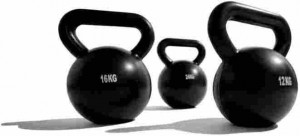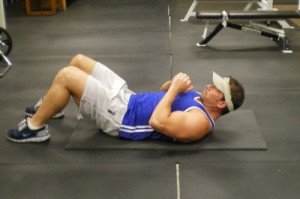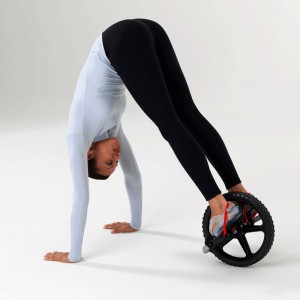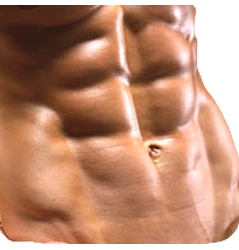Brian Schiff’s Blog
Injury Prevention, Sports Rehab & Performance Training Expert
I work with lots of patients and clients who consistently demonstrate inadequate hip and core stability. I see this show up routinely as asymmetrical 1’s for the trunk stability push-up, in-line lunge, hurdle step and rotary stability movements on the FMS. Unfortunately, this has been a recurring them in many of my females recovering from ACL reconstruction as well as runners with persistent pain/dysfunction in one lower extremity.
I am always looking for better ways to train the body in whole movement patterns as well as functional positions. One of my preferred positions is to test and challenge my clients in a split squat position. I begin with an isometric split squat cueing proper alignment and muscle activation. As clients master isometric postural control, I will allow them to add an isotonic movement by squatting in the position.
As they progress, I will add in perturbations to stimulate changes or challenges to their center of gravity. Often, you will see them struggle much more on the involved side. But to be honest, I find most people have an incredibly hard time maintaining proper alignment for long without cheating or falling forward or to the side. Allowing clients to lose form is okay provided they are cued to fix their alignment or they naturally self correct.
An additional wrinkle I throw in for this training is using the BOSU Balance Trainer. Below is a video that shows how I use this progressing from shin down to just the toes as a support on the trail leg. The second version will burn up your clients’ thighs and quickly become one of their least favorite exercises. The great thing is that you do not have to offer much resistance to create a significant perturbation.
For more detail on this exercise and application, click here to read my PFP column featuring it this week.

Kettlebells are very popular training tools these days. I find them useful in many ways – improving grip strength, core activation, asymmetrical loading, etc. With that said, I also feel with movement flaws and/or improper technique, they carry an inherent injury risk.
It is interesting to note that some people find swings to be very therapeutic and good for their back, while others who are capable of lifting very high loads with traditional lifts find them to be irritating to the spine. So why is this?
If you are like me, knowing the “why” or “cause and effect” behind exercise is very important. I am not one to blindly use an exercise without knowing its intended purpose and then quantifying risk vs. reward and results. So, it was with great interest I read Stuart McGill and Leigh Marshall’s recent article on kettlebell swings, snatches and bottoms-up carries in the NSCA Journal of Strength & Conditioning Research (Jan 2012).
While the sample size is small, I think the article provides some gems in regard to training given no one has really looked at spine loading during various swings and carries. The authors used surface EMG to record muscle activation of the back, hip and core muscles throughout the various exercises – swing, swing with Kime (abdominal pulse at top of the swing), swing to snatch, racked carry and bottoms-up carry.
Without going into all the tiny details, I wanted to share what I consider to be some key takeaways for rehab and training:
- Unlike traditional low back extension exercises such as lifting a bar or squatting exercises, the swing creates a relatively high posterior shear force (namely L4 on L5) in relation to the compressive load – this may explain why some powerlifters have no issues with heavy dead lifts but are bothered by swings
- Both compressive and shear forces were highest at the beginning of the swing
- From a compressive standpoint loads with a 16 kg kettlebell (swing) are less than one-half of that of lifting 27 kg on an Olympic bar and these would seemingly pose a low relative injury risk
- KB swings do appear to require sufficient spine stability in this shear mode to ensure that is is a “safe” exercise selection
- Those with back pain develop movement flaws and the authors report one of the most common is to move the spine under load instead of the hips – so instead of hip hinging, injured clientele are more apt to shift or bend the spine leading to repetitive and harmful forces
- A modified approach to swings with careful cueing and progression is suggested for clinicians
- The bottoms-up carry poses more challenge to the core musculature likely due to requiring more grip strength (thus stiffening the core per McGill in Ultimate Back Fitness & Performance) as well as necessitating more control to carry it, hence making it a good choice for training in terms of activation of these muscles
So, in my mind kettlebell training (like any other form of training) requires proper form, movement assessment and an intimate knowledge of the client’s medical and training history. In addition to that, we must carefully scrutinize execution of the exercise and deliver appropriate feedback and analysis.
While maximal shear occurs at the bottom, I cannot help but wonder about the potential impact of tight iliopsoas muscles given their unique relationship to the lumbar spine and reverse muscle action. It would be interesting to know if those with a greater anterior tilt and tightness are more likely to experience higher shear forces or potential back soreness over time.
This brings the discussion back to quality of movement and movement assessment. In my mind, adequately assessing the hips (flexibility, strength and stability) is also a key variable in determining how best to approach integrating the swings. As Gray would say, the lumbar spine needs stability while the hips require mobility.
A lack of hip mobility is definitely a relative precaution for swings in my mind. On top of that, fundamental hip strength/stability and core strength should be evident. Perhaps even regressing to rudimentary hip thrusts and bridges may be the best place to start for those needing a primer on form and proper movement before moving to a basic swing.
Nonetheless, a big thanks to Stuart McGill and Leigh Marshall for this work and giving us some practical food for thought. I hope this information helps you as much as it did me. May your training be safe and effective!
I thought a fitting way to kick off the new year would be to share the top 10 things I learned or embraced that have most shpaed and impacted my training and rehab this past year. In no particular order I will rattle these things off. I hope at least one of these little pearls has a positive impact on your training and/or rehab as well.
- Often times it appears necessary to perform a biceps tenodesis or tenotomy in active adults undergoing a SLAP repair to ensure more predictable pain relief. I heard this at a sports medicine conference last May and I can tell you those patients having this done alongside their shoulder surgeries seem to recover quicker with less pain relief. With that said, keep in mind that SLAP tears are difficult to define and operate on as surgeons still do not have great agreement across the board on defining the extent of injuries and how to deal with them (operative vs. non-operative).
- Performance on the Functional Movement Screen (FMS) has little to no correlation with athletic performance. I screened an NBA player and an NFL player this year who both failed the screen. However, they obviously have mad athleticism and genetic ability. Keep in mind the FMS is a valuable tool used to assess movement and expose injury risk patterns based on the 7 tests.
- Soft tissue therapy is undervalued and misunderstood by most lay people. Assessing tissue restrictions and educating our clients to perform self myofascial release techniques is essential if they want to compete and remain healthy day in and day out. Specific problem areas I have increased my focus on this year have been the psoas, soleus and posterior rotator cuff/joint capsule. Click here for my soleus blog post.
- Core training is probably as much about not moving as it is about generating force with movement. I read work from Stuart McGill and other smart people in the field, and the concepts of anti-rotation and anti-extension are sound concepts to explore and look more closely at. Many times, performance in sport and life require us to resist movement and maintain position so strengthening the core to resist potentially harmful and stressful motions is and should be an important part of training and rehab programs. Understanding how to facilitate and activate core musculature in the training to protect the spine and improve mobility/strength is key. Click here for more on my core training.
- Hip dissociation is an important element to train as the lack of it can impact function and performance in a negative way. We assess it on the active SLR in FMS and I see the lack of it show up on clinical exams all the time. Whether it is HS tightness, hip flexor weakness or simply poor neuromuscular control, clients who are unable to effectively dissociate the hips are more prone to injury and limited performance.
Continue reading…
With the new year, millions of people have made a resolution to lose weight. Along with that, comes the idea they will flatten their midsection. If you are like me, you share a certain disgust for the infomercials marketing the “next” latest and greatest abdominal machine.
For years, people have sought out how to build the perfect six pack. Obviously, nutrition is probably the single biggest factor in achieving a sculpted midsection. But, beyond that people often wonder what exercises to do to target the upper and lower abs as well as the obliques. Is this really possible?
Well, I thought I would share the results of a recent study in the Journal of Strength & Conditioning Research. The authors wanted to look at the use of other training tools versus just a body weight only exercise. In the study, they looked at surface EMG activity for the upper rectus abdominus (URA), lower rectus abdominus (LRA), external obliques (EO), internal obliques (IO), transverse abdominus (TA) and rectus femoris (RF) with the following exercises:
- Abdominal floor crunch
- Supine V-up
- Prone V-up on slide board
- Probe V-up on stability ball
- Probe V-up on TRX
- Prone V-up on power wheel

Crunch

Prone V-up with power wheel
In short the major results are as follows:
- The most muscle activity overall occurred with the power wheel
- There was no significant difference for activation of the EO, URA and LRA
- RF was much less active only during the abdominal crunch
Practical applications include:
- There is no realistic way to isolate portions of the abdominal muscles, but keep in mind one limitation may be that the study looked at MVC (contraction at only one point in the motion)
- The RF is NOT a spinal stabilizer but rather a hip flexor and therefore it can cause an anterior pelvic tilt if overly active which can be viewed as potentially harmful
- Focus on training the core globally as an integrated segment of the kinetic chain to maximize activation and understand how the hips affect completion of the movements
I hope this post stimulates your thinking with respect to abdominal training. If you do use training tools, simply stop for a moment to consider the desired training outcome, as well as the impact the body position and muscle firing patterns have on the exercise itself.
Most adult males are in search of that ever elusive six pack, right? Well, most intelligent trainers and strength coaches are well aware that there is so much more than just crunches to making the core functional.

With that said, I believe abs may be one of the most over trained sets of muscles today. Some people are doing ab work daily. Why? Our abs function daily to stabilize and resist force, as well as activate trunk movements.
In reality, the aesthetics of the midsection have far more to do with nutrition and body fat than the number of crunches one does. My aim today is not to discuss this, but instead to talk about an interesting article in the latest Strength and Conditioning Journal that discusses the effects of over training the rectus abdominis on weightlifting performance.
In this article, Ellyn Robinson discusses the best way to allow athletes to stabilize weight overhead during complex lifts such as snatches, cleans and jerks. She aptly points out that if an athlete cannot stabilize the weight overhead, he/she could miss the lift in front or behind the body.

